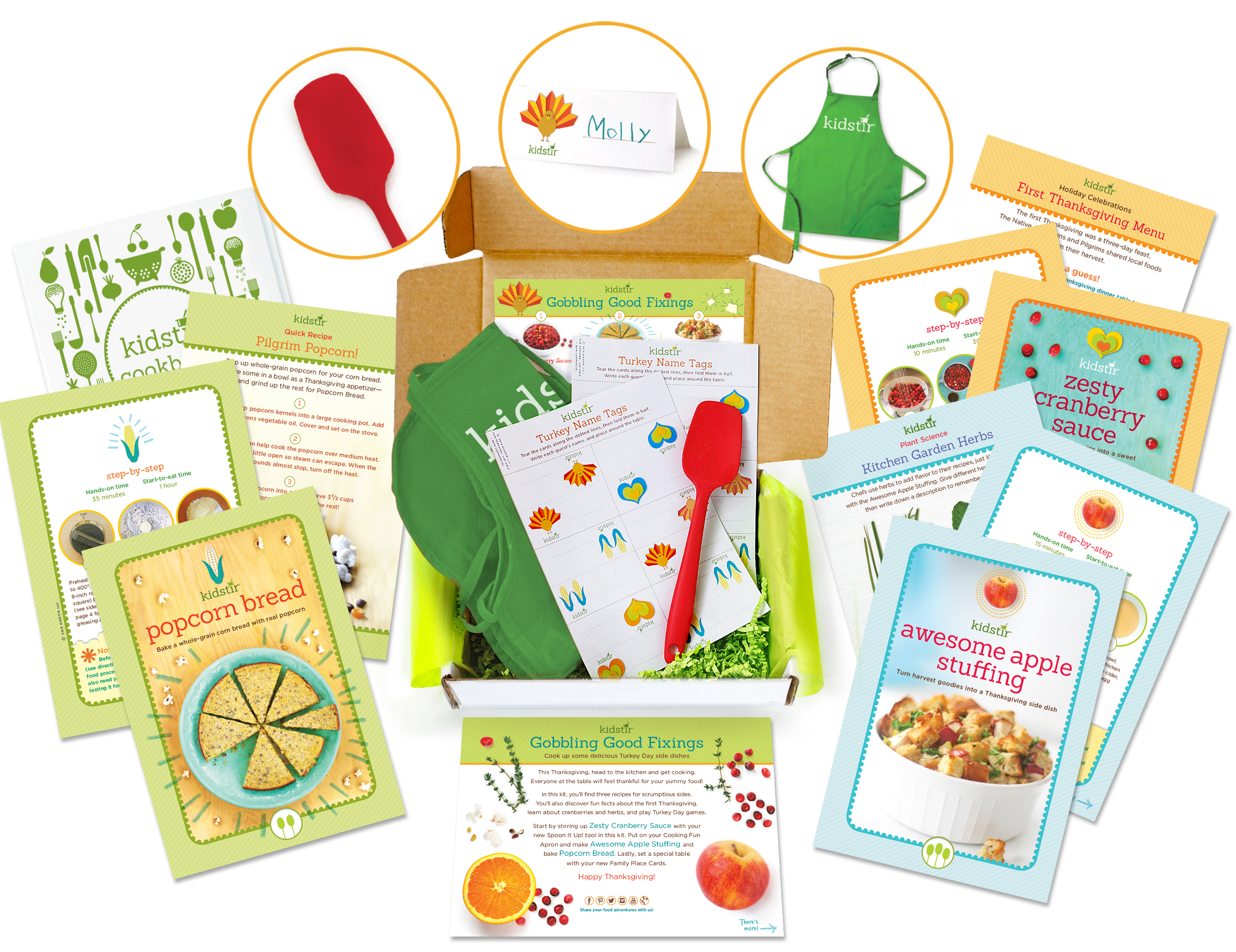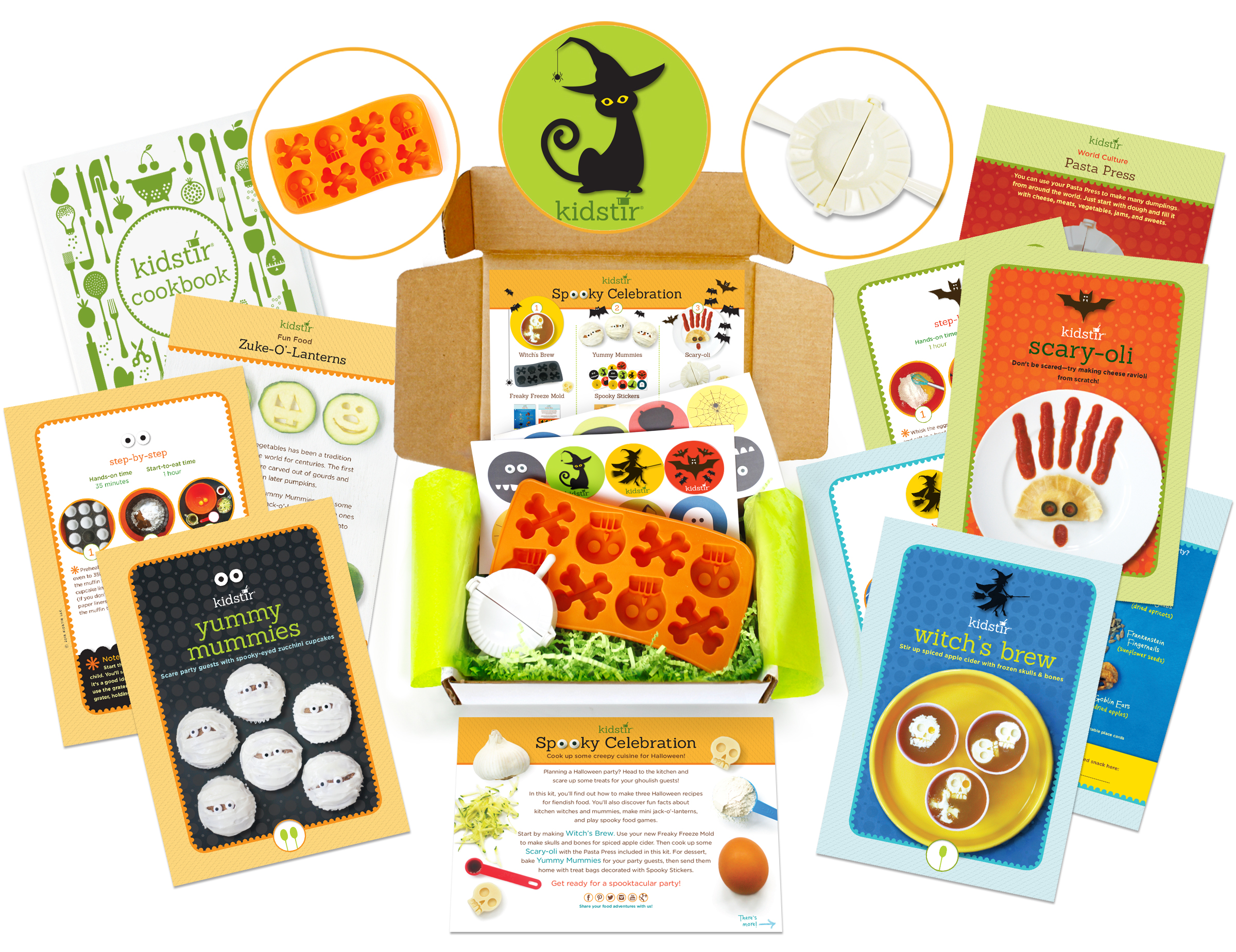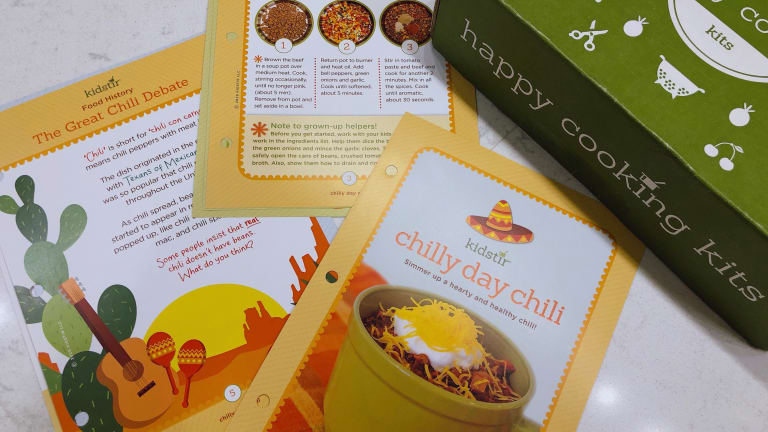Monthly cooking boxes are revolutionizing home cooking by providing pre-portioned ingredients, easy-to-follow recipes, and the convenience of doorstep delivery. These boxes cater to a wide range of dietary preferences, cooking skills, and lifestyle factors, making them a popular choice for busy individuals and families alike.
The monthly cooking box industry has experienced significant growth in recent years, driven by the increasing demand for convenient and time-saving meal solutions. With its focus on culinary exploration, meal planning assistance, and the joy of cooking, monthly cooking boxes offer a unique value proposition that continues to attract new subscribers.
Market Overview
Monthly cooking boxes, also known as meal kits, are subscription-based services that deliver pre-portioned ingredients and recipes to customers’ doorsteps. These boxes provide convenience, variety, and inspiration for home cooks, offering a hassle-free way to prepare delicious meals.
The global meal kit market has experienced significant growth in recent years, with a market size valued at USD 11.6 billion in 2022. The market is projected to continue its upward trajectory, reaching a projected value of USD 24.5 billion by 2027, exhibiting a CAGR of 13.6% during the forecast period.
Target Demographics and Psychographics
The target audience for monthly cooking boxes encompasses a wide range of demographics and psychographics. Primary consumers tend to be:
- Young professionals with limited time for meal preparation.
- Families seeking convenient and healthy meal options.
- Individuals looking to expand their culinary skills and explore new flavors.
- Health-conscious consumers seeking nutritious and balanced meals.
Competitive Landscape

The monthly cooking box industry is highly competitive, with several major players vying for market share. These companies offer a wide range of meal options, price points, and delivery services to cater to diverse customer needs.
Major Players
- HelloFresh:Offers a variety of meal plans with customizable options, including vegetarian and family-friendly choices.
- Blue Apron:Known for its focus on seasonal ingredients and chef-designed recipes.
- Home Chef:Provides meal kits with pre-portioned ingredients and step-by-step instructions.
- EveryPlate:Offers budget-friendly meal kits with simple recipes and affordable pricing.
- Sunbasket:Emphasizes organic and sustainable ingredients, with a focus on healthy and environmentally conscious options.
Meal Variety
Meal variety is a key differentiator in the monthly cooking box market. HelloFresh offers the widest selection of meals, with over 50 options available each week. Blue Apron and Home Chef also provide a diverse range of recipes, while EveryPlate and Sunbasket focus on a more limited but curated menu.
Price
Price is another important competitive factor. EveryPlate offers the most affordable meal kits, with prices starting at around $4.99 per serving. HelloFresh and Blue Apron have slightly higher prices, typically ranging from $7 to $10 per serving. Home Chef and Sunbasket are generally more expensive, with prices starting at around $12 per serving.
Delivery Options
Delivery options vary depending on the company. HelloFresh, Blue Apron, and Home Chef offer nationwide delivery, while EveryPlate and Sunbasket have more limited delivery areas. Most companies offer flexible delivery schedules, allowing customers to choose the day and time of their deliveries.
Competitive Advantages
Each major player in the monthly cooking box industry has its own competitive advantages:
- HelloFresh:Wide meal variety, customizable options, and strong brand recognition.
- Blue Apron:Focus on seasonal ingredients and chef-designed recipes.
- Home Chef:Pre-portioned ingredients and easy-to-follow instructions.
- EveryPlate:Budget-friendly pricing and simple recipes.
- Sunbasket:Emphasis on organic and sustainable ingredients.
Differentiation Strategies
To differentiate themselves from competitors, companies in the monthly cooking box industry employ various strategies:
- Meal variety:Offering a wide range of meal options to cater to diverse tastes and dietary preferences.
- Price:Targeting different price points to appeal to a broader customer base.
- Ingredient quality:Emphasizing the use of high-quality, fresh, and sustainable ingredients.
- Convenience:Providing pre-portioned ingredients, easy-to-follow recipes, and flexible delivery options.
- Brand image:Building a strong brand identity and reputation for quality and customer service.
Customer Segmentation: Monthly Cooking Box
Understanding the diverse needs of our customers is crucial for developing targeted marketing strategies. We segment our customers based on their dietary preferences, cooking skills, and lifestyle factors.
Each segment possesses unique needs and motivations that require tailored approaches.
Dietary Preferences
- Vegetarians and Vegans:Prioritize plant-based ingredients and recipes that cater to their ethical and health-conscious choices.
- Gluten-Free:Require recipes that exclude gluten-containing ingredients, ensuring their dietary restrictions are met.
- Ketogenic:Focus on high-fat, low-carb meals that align with their weight management goals.
Cooking Skills
- Beginners:Provide step-by-step instructions, simplified recipes, and basic cooking techniques to build their confidence in the kitchen.
- Intermediate:Offer more challenging recipes that introduce new ingredients, cooking methods, and culinary techniques.
- Advanced:Cater to experienced cooks with gourmet recipes, complex flavors, and opportunities to experiment with advanced cooking techniques.
Lifestyle Factors
- Time-Constrained:Offer quick and easy recipes that fit into their busy schedules.
- Family-Oriented:Provide family-friendly recipes that appeal to all ages and dietary preferences.
- Health-Conscious:Emphasize the nutritional value of ingredients and provide recipes that support healthy eating habits.
Value Proposition
Monthly cooking boxes offer a compelling value proposition by providing numerous benefits to subscribers.
Convenienceis a key aspect, as boxes eliminate the hassle of grocery shopping and meal planning. Pre-portioned ingredients and easy-to-follow recipes save time and effort, making cooking accessible and enjoyable even for busy individuals.
Meal Planning Assistance
Cooking boxes alleviate the stress of meal planning. Subscribers receive curated recipes tailored to their preferences, ensuring a varied and balanced diet. This feature is especially valuable for those with limited time or culinary knowledge.
Culinary Exploration
Boxes introduce subscribers to new flavors and cuisines. They often feature ingredients and recipes that may not be easily accessible in local grocery stores, broadening culinary horizons and encouraging adventurous cooking.
Catering to Diverse Needs
Cooking boxes are designed to cater to different customer needs. Some boxes specialize in specific cuisines, such as Mediterranean or Asian, while others focus on dietary restrictions like gluten-free or vegan. This flexibility ensures that subscribers can find a box that aligns with their preferences and requirements.
Subscription Model and Pricing
Monthly cooking box providers offer various subscription models to cater to diverse customer needs. Understanding these models and their pricing strategies is crucial for optimizing revenue generation.
Subscription models typically fall into two main categories:
- Fixed Subscription:Customers pay a flat fee for a box containing a set number of recipes and ingredients.
- Flexible Subscription:Customers have the option to customize their boxes, choosing from a wider range of recipes and adjusting the number of servings.
Pricing Strategies, Monthly cooking box
Pricing decisions are influenced by several factors, including:
- Cost of ingredients:The cost of sourcing and shipping fresh, high-quality ingredients can significantly impact pricing.
- Labor costs:The labor involved in preparing and packaging the boxes can also affect pricing.
- Market competition:Providers must consider the pricing strategies of competitors to remain competitive.
li> Value proposition:The perceived value of the box, including the convenience, recipe variety, and quality of ingredients, should be reflected in the pricing.
Recommendations for Optimization
To optimize subscription models and pricing, providers should consider the following recommendations:
- Test different models:Experiment with both fixed and flexible subscription models to determine which resonates best with target customers.
- Tiered pricing:Offer multiple subscription tiers with varying levels of customization and pricing to appeal to different budgets.
- Dynamic pricing:Adjust pricing based on factors such as seasonality, ingredient availability, and customer demand.
- Promotions and discounts:Offer promotions and discounts to attract new customers and incentivize existing ones to upgrade their subscriptions.
Supply Chain and Logistics
The supply chain and logistics involved in delivering monthly cooking boxes are critical to ensuring the timely and efficient delivery of fresh ingredients to customers. The supply chain typically involves multiple steps, including sourcing ingredients, managing inventory, packaging, and shipping.
One of the key challenges in managing the supply chain is ensuring the availability of fresh ingredients. This requires close coordination with suppliers and farmers to secure a reliable supply of high-quality ingredients. Additionally, managing inventory levels is crucial to prevent spoilage and ensure that customers receive their boxes on time.
Sourcing Ingredients
Sourcing ingredients is a critical aspect of the supply chain for monthly cooking boxes. To ensure the quality and freshness of ingredients, companies often partner with local farmers and suppliers who can provide fresh produce, meats, and other ingredients.
- Building strong relationships with suppliers is essential to secure reliable and consistent supply.
- Companies may also consider working with multiple suppliers to mitigate risks and ensure supply continuity.
- Establishing clear quality standards and inspection procedures is crucial to maintain the quality of ingredients.
Managing Inventory
Managing inventory is another key challenge in the supply chain for monthly cooking boxes. Companies need to maintain optimal inventory levels to meet customer demand while minimizing waste and spoilage.
- Utilizing inventory management systems can help companies track inventory levels and forecast demand.
- Implementing first-in, first-out (FIFO) inventory management practices can help ensure that the freshest ingredients are used first.
- Regular inventory audits can help identify and reduce waste and spoilage.
Packaging and Shipping
Packaging and shipping are important aspects of the supply chain for monthly cooking boxes. Companies need to ensure that ingredients are packaged properly to maintain freshness and prevent damage during transit.
- Using insulated packaging materials can help maintain the temperature of perishable ingredients.
- Optimizing packaging design can reduce shipping costs and environmental impact.
- Partnering with reliable shipping carriers is crucial to ensure timely and efficient delivery.
Best Practices for Optimizing Supply Chain Efficiency
Several best practices can help companies optimize the efficiency of their supply chain for monthly cooking boxes.
- Centralizing inventory management:Centralizing inventory management across multiple locations can help improve visibility and control over inventory levels.
- Utilizing technology:Leveraging technology, such as inventory management systems and tracking tools, can help streamline supply chain processes and improve efficiency.
- Collaboration with suppliers:Close collaboration with suppliers can help ensure a reliable supply of fresh ingredients and reduce lead times.
- Continuous improvement:Regularly reviewing and improving supply chain processes can help identify and address inefficiencies.
Customer Acquisition and Retention

Acquiring and retaining customers are critical for the success of any subscription box business. Effective strategies are essential to attract new subscribers, convert leads, and foster loyalty among existing customers.
To achieve these goals, businesses should focus on identifying effective channels for customer acquisition, developing strategies for lead conversion, and implementing tactics to improve customer retention and loyalty.
Effective Channels for Customer Acquisition
- Online advertising:Paid advertising campaigns on platforms like Google AdWords, Facebook Ads, and Instagram Ads can reach targeted audiences and drive traffic to your website.
- Social media marketing:Building a strong presence on social media platforms allows businesses to engage with potential customers, share valuable content, and promote their subscription boxes.
- Influencer marketing:Partnering with influencers in your industry can help you reach a wider audience and build credibility for your brand.
- Content marketing:Creating and sharing high-quality content, such as blog posts, articles, and videos, can attract organic traffic to your website and establish your brand as a thought leader.
- Email marketing:Email campaigns can be used to nurture leads, promote special offers, and stay in touch with existing customers.
Strategies for Converting Leads into Subscribers
- Provide clear value:Ensure that your subscription box offers unique and valuable benefits that meet the needs of your target audience.
- Create a compelling landing page:Your landing page should clearly explain the benefits of your subscription box and include a strong call to action.
- Offer incentives:Providing discounts, free trials, or exclusive content can encourage leads to subscribe.
- Use retargeting ads:Retargeting ads can help you reach leads who have visited your website but have not yet subscribed.
- Personalize your communications:Tailor your marketing messages to the interests and preferences of individual leads.
Tactics for Improving Customer Retention and Loyalty
- Provide excellent customer service:Respond promptly to inquiries, resolve issues quickly, and go the extra mile to ensure customer satisfaction.
- Offer loyalty programs:Reward repeat customers with discounts, exclusive perks, and other incentives.
- Create a community:Foster a sense of community among your subscribers by creating online forums, hosting events, and offering opportunities for them to connect with each other.
- Personalize the experience:Collect customer feedback and use it to tailor your subscription boxes to their individual preferences.
- Continuously improve your offerings:Regularly introduce new products, flavors, and recipes to keep your subscribers engaged and excited.
Content Marketing and Social Media
Content marketing and social media play a pivotal role in promoting monthly cooking boxes. By creating engaging and informative content, businesses can educate potential customers about their products, build brand awareness, and drive conversions.
Effective content formats for monthly cooking boxes include recipes, cooking tutorials, behind-the-scenes videos, and interviews with chefs or food experts. These formats provide value to potential customers by offering practical information, inspiration, and a glimpse into the company’s culture.
Distribution Channels
Distributing content through multiple channels is essential to reach a wider audience. Social media platforms such as Facebook, Instagram, and Pinterest are ideal for sharing recipes, cooking tips, and visually appealing images of the cooking boxes. Email marketing campaigns can be used to nurture leads and promote exclusive content, while blog posts and articles can provide in-depth information about the boxes and the company’s mission.
Social Media Engagement
Leveraging social media for customer engagement and brand building is crucial. By responding to comments, running contests, and hosting live Q&A sessions, businesses can build relationships with their followers, gather feedback, and create a sense of community around their brand.
Social media platforms also provide opportunities for user-generated content, where customers can share their experiences with the cooking boxes and inspire others. Encouraging and showcasing this content can build credibility and foster a sense of authenticity.
Future Trends and Innovations

The monthly cooking box industry is constantly evolving, with new trends and innovations emerging all the time. These trends are driven by a number of factors, including the changing needs of consumers, the rise of new technologies, and the growing popularity of healthy eating.
One of the most significant trends in the monthly cooking box industry is the increasing focus on personalization. Consumers are increasingly looking for cooking boxes that are tailored to their individual needs and preferences. This has led to the development of a number of new subscription models, such as boxes that allow consumers to choose their own recipes or boxes that are designed for specific dietary restrictions.
Another major trend in the monthly cooking box industry is the rise of technology. Technology is being used to improve every aspect of the cooking box experience, from the way boxes are ordered and delivered to the way recipes are developed and shared.
For example, some companies are now using artificial intelligence to create personalized meal plans for their subscribers.
Growth Areas and Opportunities
- Personalized cooking boxes
- Technology-enabled cooking boxes
- Healthy eating cooking boxes
- Cooking boxes for specific dietary restrictions
- Cooking boxes for families
The monthly cooking box industry is still in its early stages of development, and there are a number of growth areas and opportunities for businesses in this space. Some of the most promising areas for growth include:
Predictions for the Future
- The monthly cooking box industry will continue to grow in popularity, as more and more consumers discover the convenience and benefits of having fresh, healthy meals delivered to their doorstep.
- The industry will become increasingly personalized, with more and more companies offering boxes that are tailored to the individual needs and preferences of their subscribers.
- Technology will continue to play a major role in the industry, as companies use new technologies to improve the cooking box experience.
- The industry will see the emergence of new business models, such as boxes that are delivered on a weekly or bi-weekly basis, and boxes that are designed for specific dietary restrictions.
The monthly cooking box industry is a rapidly evolving and growing industry. By staying ahead of the latest trends and innovations, businesses can position themselves for success in this exciting market.
Closing Summary
As the monthly cooking box industry continues to evolve, we can expect to see further innovations and trends that cater to the changing needs of consumers. With its focus on convenience, customization, and culinary exploration, the monthly cooking box is poised to remain a popular choice for home cooks seeking a convenient and enjoyable cooking experience.
Popular Questions
What are the benefits of subscribing to a monthly cooking box?
Monthly cooking boxes offer several benefits, including convenience, meal planning assistance, culinary exploration, and the opportunity to try new recipes and ingredients.
How do I choose the right monthly cooking box for me?
Consider your dietary preferences, cooking skills, and lifestyle factors when choosing a monthly cooking box. Many providers offer a variety of boxes tailored to specific needs.
How much do monthly cooking boxes cost?
The cost of monthly cooking boxes varies depending on the provider, the number of meals included, and the frequency of delivery. Prices typically range from $50 to $150 per box.